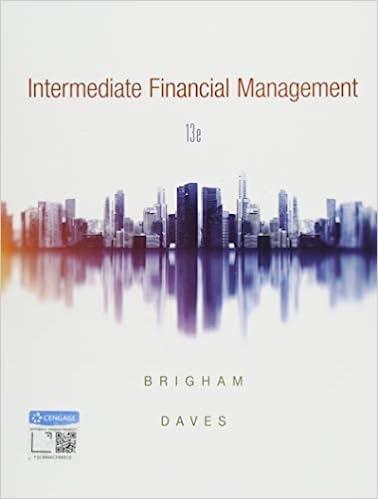Question
Suppose you are a fund manager, currently managing a diversified risky portfolio that consists of equity index fund A (40%), bond index fund B (30%),
Suppose you are a fund manager, currently managing a diversified risky portfolio that consists of equity index fund A (40%), bond index fund B (30%), and international equity fund C (30%). The portfolio has an expected rate of return of 12% and a standard deviation of 25%. Lisa, a project manager in IBM, is one of your clients. After some discussion with her, you suggest Lisa to invest her total $800,000 personal wealth in your fund and a T-bill money market fund, which has a return of 4%. You can assume the quadratic utility function for some of the following analysis.
a) If Lisa chooses to invest 70% of a portfolio in your fund and 30% in the T-bill, what is the expected value and standard deviation of the rate of return on her portfolio?
b) Suppose that Lisa prefers to invest in your fund a certain proportion so that maximizes the expected return on the overall portfolio subject to the constraint that the overall portfolios standard deviation will not exceed 18%. What is the investment proportion of your fund in Lisas new portfolio? What is the expected rate of return on her overall portfolio?
c) From Lisas risk preference questionnaire, you learnt that her risk-aversion coefficient is A = 1.2. What proportions of the total investment should you suggest that she invest in your fund and the T-bill, respectively?
d) Assume Lisa still keeps her allocation as in part a), i.e., 70% in your fund and 30% in the T-bill. Few weeks later, Lisa is granted some IBM companys stocks worth $200,000, as bonus of the year. By looking at historical return data, you provide her with the following forecast information. Whats the expected return of Lisas new portfolio that includes IBM? Whats the standard deviation of her new portfolio?
| Expected Returns | Standard Deviation | Correlation with the current portfolio | |
| IBM | 15% | 30% | 0.4 |
e) Continue with question d). Now Lisa decides to choose one of the following: i) keep all IBM stocks in her current portfolio; ii) sell all IBM stocks and invest the $200,000 in the previous held portfolio (70% your fund and 30% in the T-bill). Which one will you recommend? Please explain why.
Step by Step Solution
There are 3 Steps involved in it
Step: 1

Get Instant Access to Expert-Tailored Solutions
See step-by-step solutions with expert insights and AI powered tools for academic success
Step: 2

Step: 3

Ace Your Homework with AI
Get the answers you need in no time with our AI-driven, step-by-step assistance
Get Started


